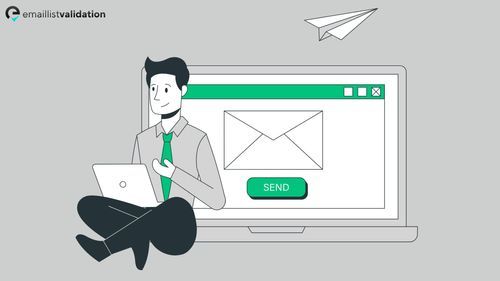In the realm of digital communication, email verification plays a pivotal role in ensuring the security, accuracy, and integrity of online interactions. Yet, the journey of email verification doesn't end with technical implementation—it extends to the content within verification emails. In this comprehensive guide, we will explore the art of crafting effective email verification content, offering expert insights, best practices, and a showcase of proven examples to inspire and guide you.
The Crucial Role of Email Verification Content
Before we delve into the intricacies of email verification content, let's understand why it matters in the first place:
User Engagement: Email verification emails are often the first direct interaction with users. Compelling content can engage users, setting the tone for a positive experience.
Trust Building: Well-crafted content instills trust in users, assuring them that they are interacting with a legitimate and secure platform.
Instructions and Guidance: Verification emails should provide clear instructions, guiding users through the verification process seamlessly.
Branding Opportunity: Verification emails offer an opportunity to reinforce your brand's identity through consistent and visually appealing content.
Now, let's explore the best practices and techniques for creating email verification content that captivates and converts.
Best Practices for Crafting Effective Email Verification Content
Clear and Concise Subject Lines: Start with a subject line that clearly conveys the purpose of the email, such as "Verify Your Email Address."
Personalization: Whenever possible, address the recipient by their name, creating a personalized and friendly tone.
Compelling Headlines: Use a compelling headline that encourages recipients to take action, such as "Complete Your Registration."
Clear Call to Action (CTA): Place a prominent and easy-to-spot CTA button that leads to the verification process. Use action-oriented language like "Verify Now."
Visual Appeal: Design the email with a visually appealing layout, incorporating your brand colors and logo for instant recognition.
Instructions and Benefits: Provide clear, step-by-step instructions on how to complete the verification process. Highlight the benefits of verification, such as enhanced security or access to exclusive features.
Avoid Jargon: Use language that is easy to understand, avoiding technical jargon that might confuse recipients.
Proven Email Verification Content Examples
The Welcome Email: A warm and welcoming tone combined with a clear call to action makes this verification email from Airbnb a prime example of user-friendly content.
The Minimalist Approach: Slack's verification email is a testament to the power of minimalism. A straightforward message and a single, prominent CTA button make the process incredibly user-friendly.
The Value Proposition: LinkedIn's verification email combines a personalized greeting with a compelling value proposition. It emphasizes the benefits of verification for professional networking.
The Social Touch: Pinterest's verification email takes a social approach by inviting users to connect with their friends. This adds a layer of engagement beyond the standard verification process.
The Assistance Offer: UberEats' verification email not only guides users through the process but also offers assistance with a customer support contact. It reassures users of support if needed.
Commonly Asked Questions About Email Verification Content
What should the subject line of an email verification email be?
The subject line should be clear and concise, conveying the purpose of the email, such as "Verify Your Email Address."
How can I personalize email verification content?
Use the recipient's name whenever possible and tailor the content to their specific user journey.
What is the role of visuals in email verification content?
Visual elements, such as your brand logo and colors, enhance recognition and trust. A well-designed layout improves overall appeal.
What are the key components of an effective call to action (CTA)?
An effective CTA should be clear, action-oriented, and prominently placed in the email. Use persuasive language like "Verify Now."
Are there specific benefits I should highlight in email verification content?
Highlight benefits like enhanced security, access to exclusive features, or personalized recommendations, depending on your platform's offerings.
Conclusion: Elevate Your Email Verification Content to Engage and Delight
Email verification content serves as the bridge between your platform and its users, setting the stage for fruitful interactions. Crafting effective email verification content involves clear communication, personalization, and a touch of creativity. By following best practices and drawing inspiration from proven examples, you can create verification emails that captivate users, instill trust, and pave the way for meaningful user experiences. Elevate your email verification content today, and watch as it becomes a valuable asset in your user engagement strategy.



